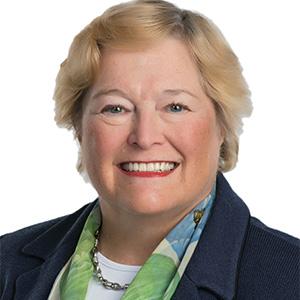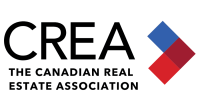
Building Pressure

Whether the average person is a rational actor within an economic system is a question that a few centuries of debate have yet to answer. But in 2022, with all kinds of complications facing commercial real estate, it’s easy to get caught up in the news of the day and lose sight of the forest among the trees. Inflation is one such topic of intense interest for commercial real estate.
To provide some much-needed context to the conversation, Commercial Investment Real Estate spoke to Martha Peyton, Ph.D., managing director and global head real assets research at Aegon Asset Management. Long considered a hedge against inflation, commercial real estate continues to face challenges in the face of COVID-19 and the war in Ukraine, but opportunities are available in all property sectors for smart, knowledgeable investors.
Listen to this full-length Commercial Investment Real Estate podcast with Martha Peyton, Ph.D.
CIRE: Considering commercial real estate has traditionally been seen as a hedge against inflation, what impact do larger economic trends have on CRE?
Martha Peyton, Ph.D.: Commercial real estate starts to grab headlines as a hedge when inflation starts to jump, so it’s very much expected and very rational that investors are asking that question again. What investors tell us when we ask them in surveys about interest in commercial real estate, the No. 1 attraction is its diversifying power — and I don’t think this has changed. But the potential to hedge against inflation is also something that makes CRE attractive at times like these.
Looking at CRE and inflation, I want to go into the real estate part of the question rather than inflation. If an investor can look at historical performance and empirical analysis, has the investment class traditionally beaten inflation? You can look at it strictly in terms of historical data, and when you do that, you come away feeling pretty good that commercial real estate is an effective inflation hedge. But if you’re a more curious investor, you are going to think about why — and you are going to look for the structural characteristics of an asset class that underpin its capacity to serve as an inflation hedge. What you’re going to find there is that the lease structure of some sectors is very effective to hedge inflation. If a lease structure provides step-ups, where the rent is going to inch up periodically in an amount determined by the official inflation rate, that’s pure gold as a hedge. You’re going to see hedging capacity when you have rents that pass on common expenses to tenants, so-called CAM expenses such as fuel costs or higher property taxes.
You’ll also see inflation hedging capacity when leases are relatively shorter in term, which is common in the multifamily sector. Where you’ve got one- and two-year leases, when these expire, you can reset rents to cover whatever inflation has transpired or is currently transpiring. But the really, really important thing to put on the table is that real estate investing can only prove to be a hedge against inflation in markets and sectors that are balanced. If you’ve got a sector in a particular location that’s way overbuilt, you need to be tracking the relative supply-demand balance in sectors and markets.
CIRE: With the mixed performance of different sectors in the wake of COVID-19, I would imagine that investment dollars would flow toward more stable areas of CRE, like industrial and multifamily versus retail and office. Is this a correct assumption?
Peyton: This is absolutely correct. The complications introduced by COVID-19 in office and a little less so in retail may offset this sector’s inflation hedging potential. The office sector continues to function in the shadow of COVID-19 — there is not any agreement about how the return to office will play out. Office workers in general say they want flexibility. They don’t want to be locked into five days a week in the workplace.
But what exactly does this flexibility mean? A consensus seems to be saying that maybe two or three days a week is a good start. Flexibility could mean the ability to work from home if an employee’s child care for the day falls through at the last minute. These are different kinds of considerations that employers are trying to grapple with. It’s important to remember the unemployment rate was 3.7 percent in August with a considerable amount of job openings, so employers want to be flexible. They want to keep employees happy.
With the labor market as tight as it is now, the challenges in the office sector are creating a shadow over the valuation and desirability of office as an investment. There is another complication in the office sector that’s related to climate change and environmental considerations as we move toward committing to net-zero carbon activities in the years ahead. Looking to 2040 and 2050, what do you do with office space that would need major investment dollars to retrofit it for a net-zero environment? Considering all these questions, when you ask if office investments are effective inflation hedges, you’re going to get a lot of footnotes. But if you focus on high-quality, newer office assets that have environmental considerations, those properties could be an inflation hedge.
CIRE: You mentioned lease length as a way to combat inflation. How much of an impact does this have for interest in multifamily?
Peyton: That is one thing, but the other reason for interest in multifamily is the supply is very tight — particularly when you look at more affordable, quality apartments. For renters who can’t afford new, expensive downtown areas with plenty of amenities, the demand outpaces the supply. For multifamily, the sector is attractive because of the demand characteristics, shorter leases, and its overall capacity to hedge inflation.
We don’t need to despair. Consumers have reasons to be discouraged or unhappy, but it’s important to keep people’s spirits up. We have reason to believe better times are ahead.
CIRE: As inflation continues to be an issue, interest rates are also inching up and may continue to do so for the foreseeable future. What impact will borrowing costs have on how investors view commercial real estate?
Peyton: When you look at recent data, the spread on commercial mortgages has increased lately. The 10-year Treasury rate hovered around 3.5 percent in September, but it has increased since COVID-19. Before the pandemic, it was below 1 percent. So, yes, borrowers are facing higher rates, but that shouldn’t be a surprise. The COVID-19 period of extremely accommodative monetary policy was historically unprecedented, so in no way should borrowers have expected that a 1.5 percent 10-year Treasury was going to be around for the long run. Savvy borrowers who look at historical interest rates should have known that it was time to jump in and take advantage of those rates because they were not going to last.
When it comes to knowing if this inflationary period is transitory or something more permanent, the trite answer is that time will tell. But really, you’ve got to understand the forces that are driving inflation and make a personal judgment about timing. The variety of forces behind inflation include very clearly transient forces related to COVID-19, particularly the impact of shutdowns in China and lockdowns that disrupt the global flow of products. Is this getting better or worse? No one really knows because we don’t know how long upticks will last. We also don’t know if another COVID-19 mutation could come along and start that process all over again. The pandemic is transient but still of unknown duration.
The second consideration is the war in Ukraine, which has taken a terrible toll on trade in agricultural commodities, grain, and fertilizer. How long will it continue? Nobody knows, but we can look at it and say it’s not permanent. The third temporary factor is the support American households received in anti-COVID-19 support payments that were last distributed in 2021. People accumulated extra savings, so the spending related to those payments is slowly eating away at that money.
But outside of these factors, it’s important to dig into the details of the data behind inflation. We have seen some improvements in producer price index, in the consumer price index, and in the price of used cars, for instance. The details in these data points may help address some inflation panic, but the situation continues to evolve.
CIRE: My final question is a bit outside the real world, but if you were given the keys to the economy, what steps would you take to minimize inflation and improve the economy as a whole?
Peyton: It’s important we have confidence in the Federal Reserve. I think the Fed has responded very well to the COVID-19 situation, and I think the chairman has made very reasonable comments. Policymakers, politicians, and the media would serve the public interest if they expressed appropriate confidence in the Fed. It’s important to discourage hoarding. Thinking back to the early days of the pandemic where people would have a garage full of toilet paper, that behavior is damaging. Right now, I would focus public attention on the good news that we’re seeing in the data. We don’t need to despair. … Consumers have reasons to be discouraged or unhappy, but it’s important to keep people’s spirits up. We have reason to believe better times are ahead.
Editor's note: This article is an adapted excerpt from a full-length Commercial Investment Real Estate
podcast.






